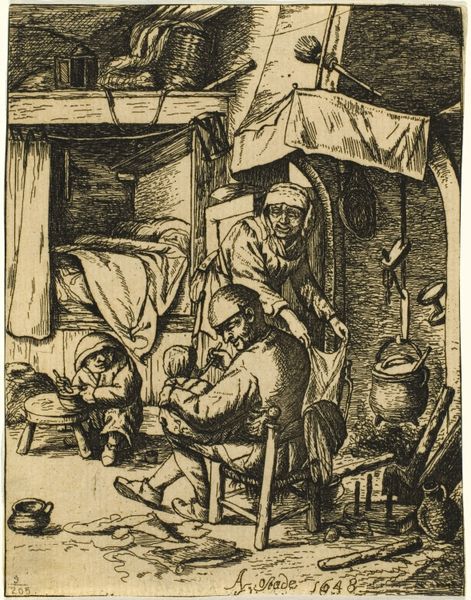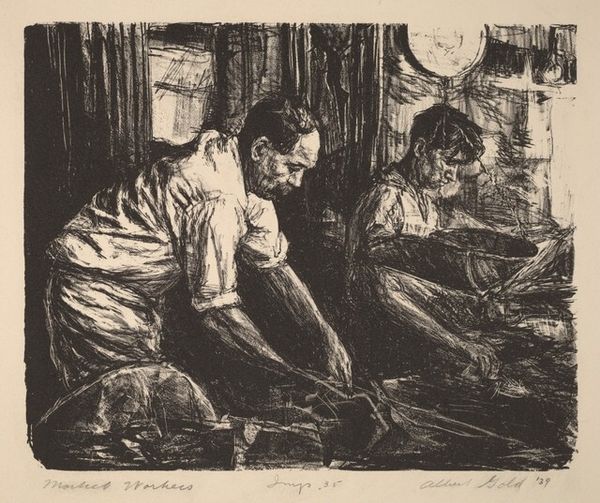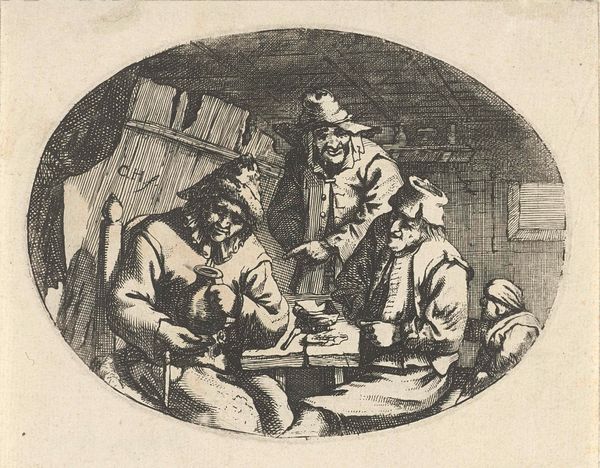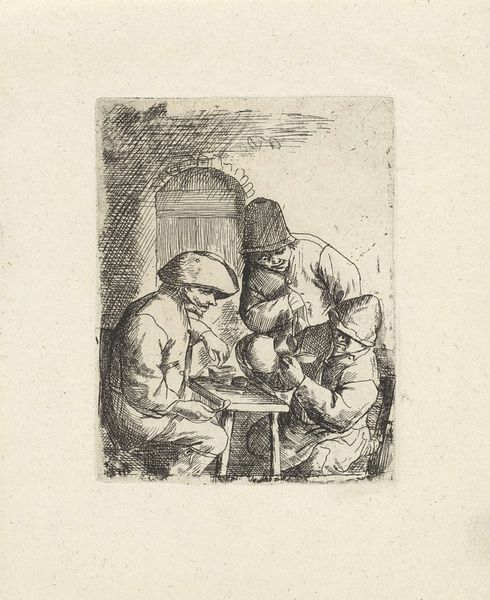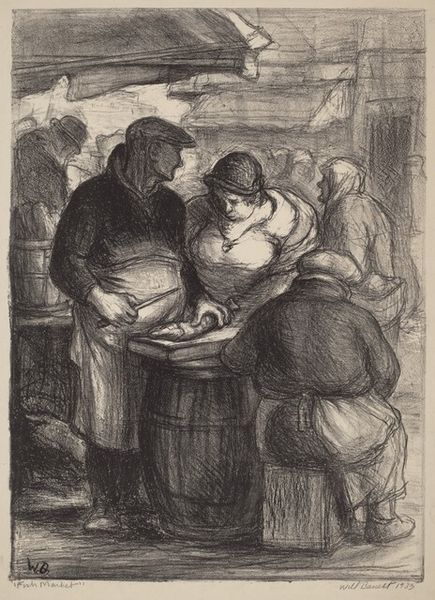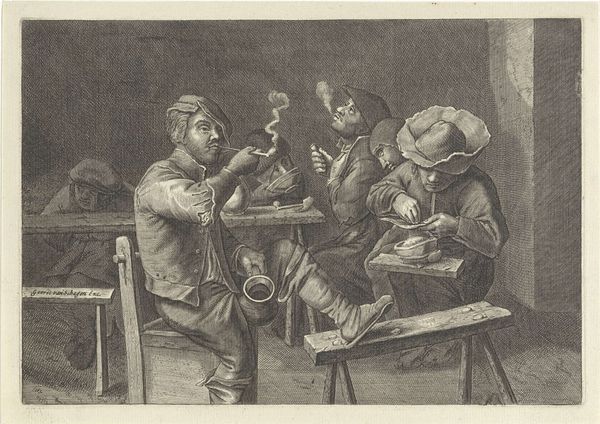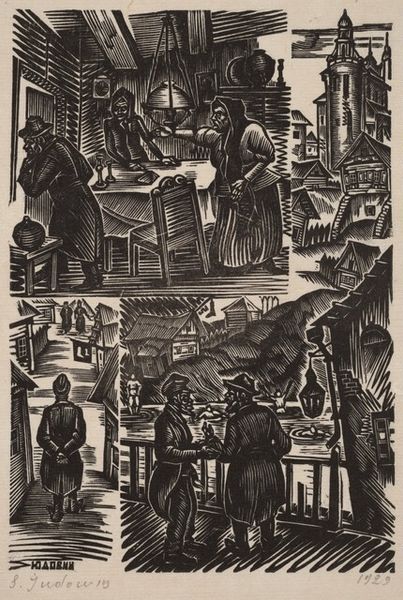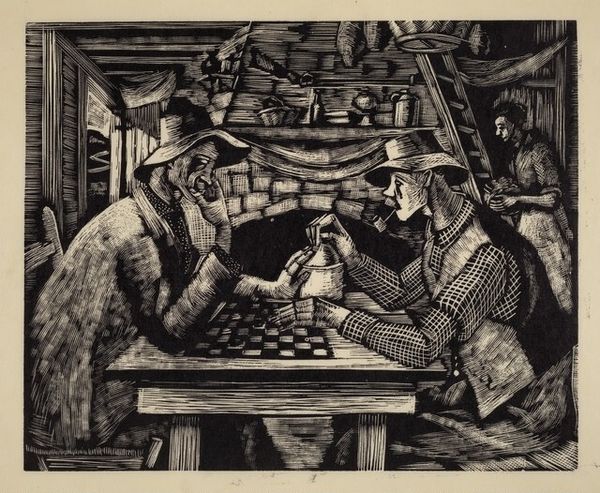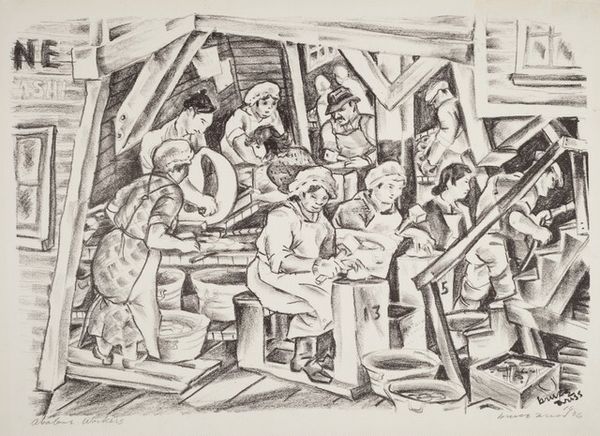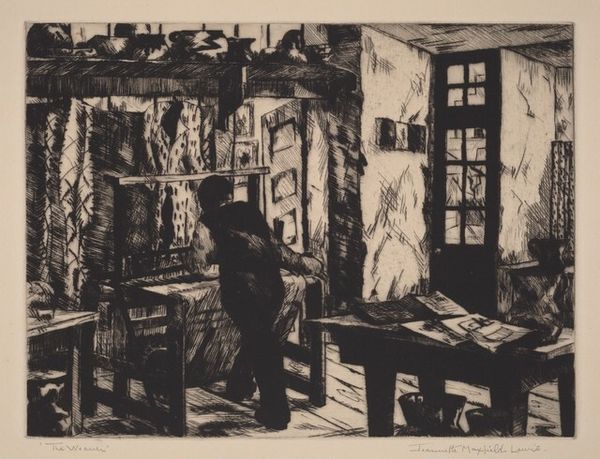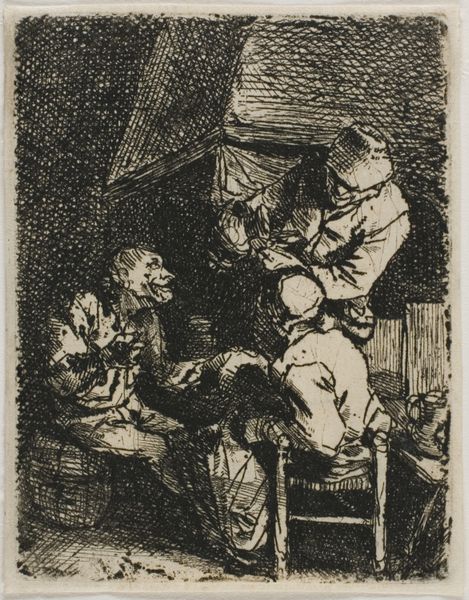
print, woodcut
# print
#
woodcut
#
genre-painting
#
realism
Dimensions: Image:320 x 378 Sheet:385 x 453
Copyright: National Gallery of Art: CC0 1.0
Curator: Before us, we have "Ozark Kitchen," a woodcut print crafted by Bernard P. Schardt sometime between 1935 and 1943. Editor: It strikes me immediately as a portrait of labor, but with a real warmth to it. Despite the high contrast of the woodcut, the composition—the hunched man at the table, the woman diligently washing dishes, even the dog resting at their feet—feels intimate and very human. Curator: Absolutely. The kitchen itself acts as an important symbol here; hearth and home were powerfully resonant motifs, particularly during the Depression era. Schardt seems keen on conveying a sense of perseverance and domestic harmony despite adversity. Notice the detail given to the texture of the wood in the walls and floorboards. This highlights the resourcefulness, yet also the potential vulnerability of their existence. Editor: That emphasis on texture, the deep grain, it's so crucial, isn't it? I see this print as a representation of the struggles of working-class families during that period. I mean, look at the dog resting under the table; that canine, though static, hints at themes of loyalty and mutual care among the impoverished. It reminds us that community support can often soften hardships. Curator: You know, when viewed through the lens of iconography, even the humblest of objects transform into reservoirs of cultural meaning. Dishes drying represent cleanliness and sustenance, all carefully presented through Schardt’s unique approach. This intimate moment reminds me of the countless folk narratives and cultural myths in which food sharing equals togetherness and family wellbeing. Editor: Yes, exactly. The starkness of the black and white, I think, serves to underscore that this narrative, while specific to a certain time and place, still has broad resonance. Consider what we know now regarding ongoing food security and healthcare concerns within impoverished rural pockets of America; sadly, very little has shifted across generations. Curator: An intriguing perspective. Well, considering the symbolism of home and hearth, in concert with these themes you’ve introduced, "Ozark Kitchen” provides us an emotional focal point, and invites consideration around broader struggles which were just as applicable in the past as in the present. Editor: Yes, a dialogue that’s very necessary and that has become unexpectedly intimate through our shared experience of art.
Comments
No comments
Be the first to comment and join the conversation on the ultimate creative platform.

